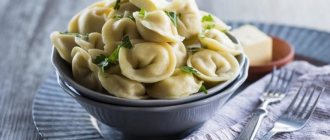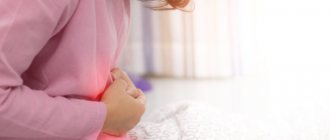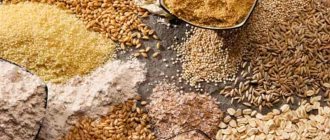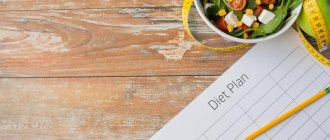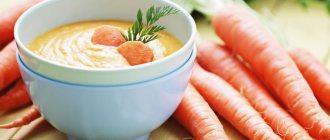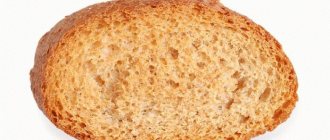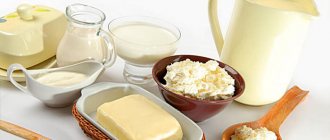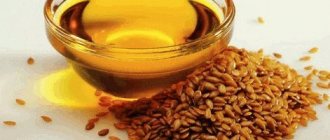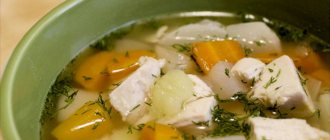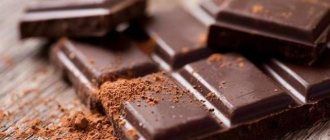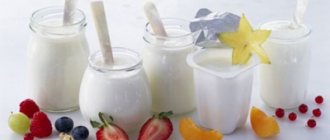Rusks for pancreatitis are included in the list of permitted products during exacerbation of the disease. Despite this, in case of acute inflammation of the pancreas, it is allowed to eat not all types of dried bread, but only those that do not contain chemical additives, flavors, preservatives, stabilizers, dyes, taste improvers, hydrogenated vegetable fats, spices, etc.
Rusks for pancreatitis are included in the list of permitted products during exacerbation of the disease.
Is it possible or not to eat crackers with pancreatitis?
Numerous experts say that there is no need to completely eliminate bakery products for such a disease. Freshly baked bread contains a significant amount of starch, which activates the secretion of gastric juice. Because of this, an exacerbation may occur and an inflammatory process may occur in the pancreas.
Dried products lose some of their starch along with water, so they are more preferable. Rusks baked in the oven or simply slightly dried for several days can be consumed without restrictions.
For pancreatitis, crackers will be an excellent addition to the basic products of the diet. It is allowed to consume them after soaking them in juice or soup: thus, they are easier to digest and do not injure the walls of the gastric tract. Remember to chew your food well.
What kind of bread is not allowed?
The Pevzner diet for patients with inflammation of the pancreas is not always followed strictly according to the original recommendations. Taking into account the characteristics of the course of the disease, secondary chronic diseases, anamnesis and clinical picture, a gastroenterologist or nutritionist can adjust the Pevzner table for each specific patient.
Some patients independently explore the effect of certain foods on their well-being, introducing foods into the diet in small dosages and observing the situation. This behavior, with the right approach, can be useful, but there are foods that should be excluded in any case and for any clinical picture, in particular:
- Baking from butter dough;
- Loaves and bricks made from premium flour;
- Any bread that is freshly baked and still warm;
- Shortbread dough and any baked goods made from it, be it salty or sweet.
Of course, lovers of baked goods and shortbread cakes do not deny themselves this pleasure from time to time, introducing small portions into their meals, but this should be done extremely rarely and at the same time with the confidence that, in the event of an attack, there is something to stop it.
Crackers for pancreatitis and cholecystitis
It is recommended to introduce crackers into the patient’s diet upon the onset of stable remission.
Crackers should not include in their own structure:
- No flavorings;
- Vegetable fats;
- Flavor enhancers;
- Dried fruits;
- Preservatives and dyes.
Bagels are one of the best types of baked goods that are recommended to enrich the patient's diet. They do not include prohibited and harmful additives in their structure and are perfect for taking them with lactic acid products or tea. Another good alternative to bread is drying.
It is important to remember that these products should be consumed in moderation. On the contrary, they can cause constipation and subsequent dysbacteriosis. Moreover, bagels and dryers should be soaked so as not to have an irritating effect on mucous surfaces.
It is recommended to make crackers yourself at home by simply cutting the bread into small pieces and drying them in the oven for 40-60 minutes. At the same time, you need to make sure that the crackers do not burn.
During remission
During remission, crackers can be a good alternative to bread or confectionery for tea. It is recommended to stick to wheat crackers, but not rich ones. It is best to make them yourself by drying them in a toaster or oven.
You can also carefully introduce confectionery crackers into your diet with the addition of dried apricots, raisins, and sesame seeds. All other types of crackers, even during remission, are strictly prohibited.
To dry the bread yourself, just cut it into slices and place them in the oven for 5-7 minutes. Without an outdoor oven, they dry out within three days.
If you want to buy ready-made crackers in a store, pay close attention to their composition. There should be an inscription on the packaging stating that they are made from a wheat loaf. If the composition contains flavorings, dyes, thickeners, preservatives, hot seasonings and flavor enhancers, you should refuse to purchase it in order to avoid an attack of pancreatitis after consumption.
The packaging will indicate approximately the following composition of the product: 11 grams of protein, 67 grams of carbohydrates, 1 gram of fat, 330 kcal per hundred grams.
Which crackers (from which bread) are preferable for pancreatitis?
It is better if the crackers are made from black bread. It is better not to use white bread for these purposes. It is not recommended to consume products made from rye bread, as they are excessively coarse and require a longer digestion process. In addition, stomach acidity may increase and digestion may be complicated.
If you choose crackers with whole seeds or bran, then it is better to choose bran bread and make crackers from it. In case of pancreatitis, such bread should be introduced into the menu carefully, since bran is not digested by the digestive system.
Crackers, which include dried fruits: dried apricots, raisins, prunes and others, are also prohibited.
If a patient with pancreatitis buys ready-made crackers, he must pay attention to the following principles:
- Purchase only the freshest crackers or bread for making them.
- See what kind of flour the product is made from.
- Please take into account that prohibited additives may have been used in the production of crackers.
Products that were prepared by air drying are the healthiest. They are allowed to be consumed in any volume, but you should remember not to overeat.
What kind of bread can you use?
Bread allowed for consumption and, accordingly, crackers made from it should be gentle on the gland and stomach walls. You can consume no more than two hundred grams per day.
Allowed breads include gray bread, without yeast, prepared with purified varieties of wheat. It is worth noting that yeast-free bread made with hop sourdough can cause a choleretic effect and be harmful in case of biliary pancreatitis. It is also allowed to eat Armenian lavash.
During remission, it is allowed to add diet bread, crackers with bran, and low gluten content to this list.
What are the benefits of diet bread?
With pancreatitis, it is possible to diversify the patient's bland diet. To do this, you can add bread to the menu. This type of bakery product looks like a thin plate of dough, which has been dried under special conditions.
Typically, bread rolls do not have any additives, dyes or flavors; they are lighter in energy value than crackers and are quite easily absorbed by the body. You can buy bread rolls in special sections of supermarkets. They are consumed with first and second courses, can be added to salads, and used as a dessert with honey and other permitted sweets.
The bread does not need to be dried further. In addition, crispbreads can be more relevant for pancreatitis, since they include a larger volume of valuable nutritional components than crackers. For variety, it is allowed to alternate the intake of bread and crackers.
Basic diet rules: what foods you can eat
Some foods are even useful for digestive diseases
Products consumed for diseases of the digestive system should be rich in proteins and contain as little fat as possible that disrupts their functioning. Let's look at what foods are recommended to include in your diet.
- Lean meats. Meat is the main source of protein and should not be excluded from the diet. However, with pancreatitis and cholecystitis, it is extremely important what kind of meat you buy and how you prepare it. It is advisable to buy only lean meat, that is, beef, skinless chicken, turkey, rabbit. The meat should be boiled or cooked in a double boiler in the form of minced meat cutlets, without spices, sauces or seasonings. Of course, you can add salt, but in moderation.
- Lean fish. Fish should also be lean, steamed, boiled, in the form of a soufflé or aspic. You will have to forget about smoked, salted and grilled fish. Canned fish in oil should also be excluded.
- Stale bread. Bread can be consumed in the form of crackers and toast. Just day-old bread in moderation is also harmless. If you wish, you can eat a savory pie with fish or cottage cheese.
- Dairy and fermented milk products. You can eat low-fat yogurt, low-fat cottage cheese, kefir, and sour cream in small quantities. But it is better to exclude cream, full-fat milk, fermented baked milk and cheese from the diet.
- Eggs. You can eat eggs, but in the form of an omelet or soft-boiled and no more than two yolks per day. Cereals. You can eat buckwheat, rice, semolina, oatmeal in the form of porridges or side dishes.
- Soups. It is allowed to eat soups with vegetable broth. You will also have to avoid frying in oil.
- Vegetables. You can eat steamed or baked vegetables without spices. The amount of fresh vegetables for pancreatitis should be reduced.
- Non-acidic fruits and berries. Baked apples and pears will not do any harm, as well as dried fruits and compotes. It is advisable to avoid eating fresh berries and fruits during an exacerbation.
- Some sweets. Honey, jam, sugar in small quantities will not harm. You can also eat souffle, caramel, marshmallows.
- Oil. Natural butter and vegetable oil can be consumed, but in small quantities.
Benefits and potential harms in illness
Useful qualities of crackers:
- They include many vitamins from categories B, PP, H, micro- and macroelements, fiber.
- Crackers are easily digestible. In order to digest them, increased production of digestive enzymes is not required. This creates minimal stress on the organ. In addition, taking the product makes it possible to avoid the formation of gas and stop fermentation in the intestinal tract.
- Rusks are an important source of vegetable protein and easily digestible carbohydrates, which are required to provide the patient's body with nutrients and energy.
- Gray crackers can quickly saturate the patient's body.
Harm of crackers:
- With prolonged use, especially in the morning on an empty stomach, it causes the formation of chronic constipation.
- Bakery products have a high calorie content.
It must be remembered that patients with pancreatitis are prohibited from eating products with flavorings and other harmful additives.
Diet during illness
The pancreas reacts quite clearly to non-compliance with the diet - the pain syndrome only intensifies, and the desire to eat something disappears completely. In order not to cause irritation to the inflamed membranes of the gland, it is recommended to follow the general rules that can be used to avoid exacerbation of pancreatitis:
- Do not overeat, eat small portions;
- Meals should be frequent, up to six times a day;
- Proteins should predominate in the diet;
- It is necessary to reduce the amount of fats and carbohydrates;
- Products that cause bile secretion are excluded from the diet;
- If the pain syndrome worsens, therapeutic fasting is prescribed for a day or two.
These rules are subject to diet number 5 according to Pevzner, which is prescribed to all patients with pancreatitis without exception. Table number five has certain recommendations and restrictions on food intake, including the use of crackers for pancreatitis.
Features of use
If you have glandular diseases, you should eat crackers with caution and outside the period of exacerbation. It is necessary to chew the product thoroughly until a paste forms in the mouth. This will help facilitate the digestion of the product, since digestive processes begin in the mouth.
Note! It is necessary to eat crackers for pancreatitis in moderation, starting with one cracker per day.
In acute form
In acute pancreatitis, the patient must be on a fasting diet for several days. This is required for the reason that it is necessary to remove the load from the pancreas and reduce the intensity of inflammation.
In the chronic stage
In the chronic form of pancreatitis, the patient’s diet must include dry bread. This will help provide the human body with the required nutritional components. In addition, such a product is healthier than fresh bread and other bakery products.
During exacerbation of the disease
During an exacerbation of the disease, a person must follow a strict diet. For this reason, not only fresh bread, but also crackers are prohibited during this period of time.
During remission
When the exacerbation has passed and remission has occurred, when the patient’s condition has completely stabilized, the person can use a more expanded diet. During this period, the consumption of crackers is not prohibited.
Crackers for exacerbation
During an attack and during rehabilitation after it, the patient is prohibited from eating absolutely any food, including crackers. On the first day, only water and a weak rosehip decoction are allowed.
Only after two weeks can the doctor allow you to eat crackers, but with any liquid - kefir, tea, soup. In this form, they will not mechanically damage the walls of the esophagus, stomach and intestines. Therefore, they are thoroughly soaked before use.
It is worth paying attention that only wheat crackers are allowed for consumption. As for butter, rye, spicy, and especially seasoned crackers that are sold in stores, they are prohibited for pancreatitis.
Cooking at home
Crackers can be purchased at any retail outlet, but it is preferable to make your own at home. This will provide an opportunity to be sure that the structure of the crackers is natural and does not contain any harmful substances.
For this, it is best to use homemade bread. It is prohibited to prepare crackers from buns and whole grain products that contain seeds, raisins, prunes, dried apricots, and cereals.
The bread should be cut into slices, the thickness of which should be no more than 1-1.5 cm. They should be placed on a baking sheet and covered with foil or baking paper. Place in a preheated oven for 15-20 minutes. When this time has elapsed, do not remove the pan from the oven, but leave it for another 30 minutes. After cooling completely, the crackers will be ready.
